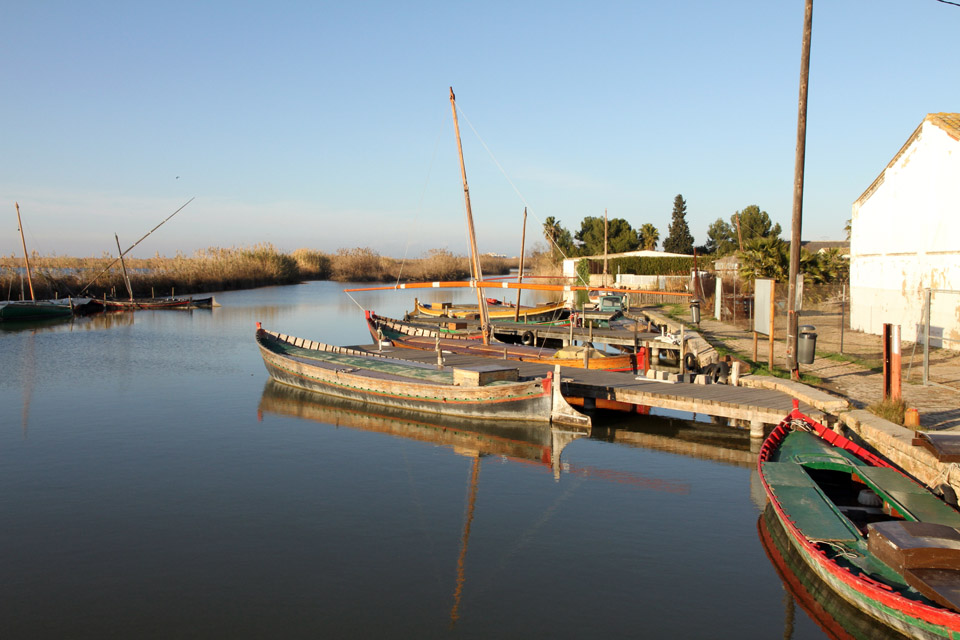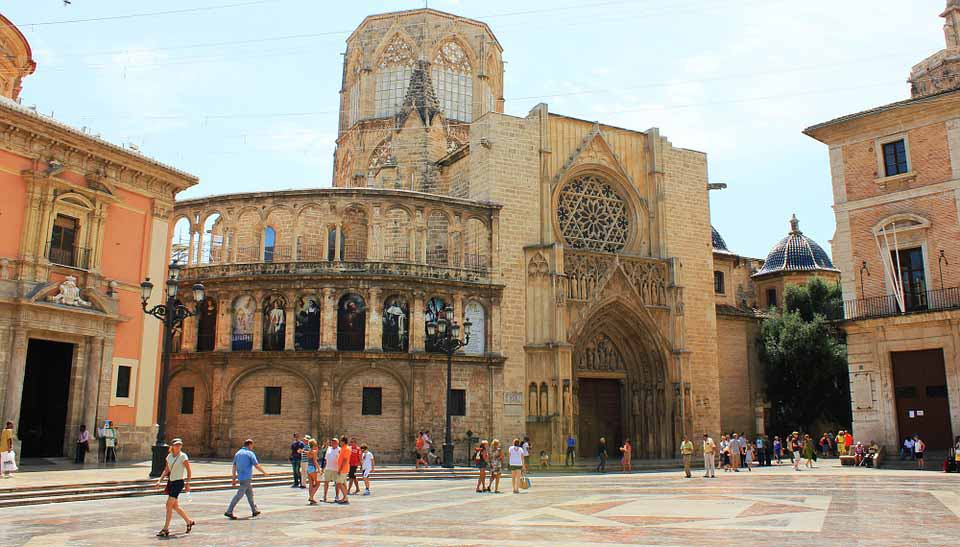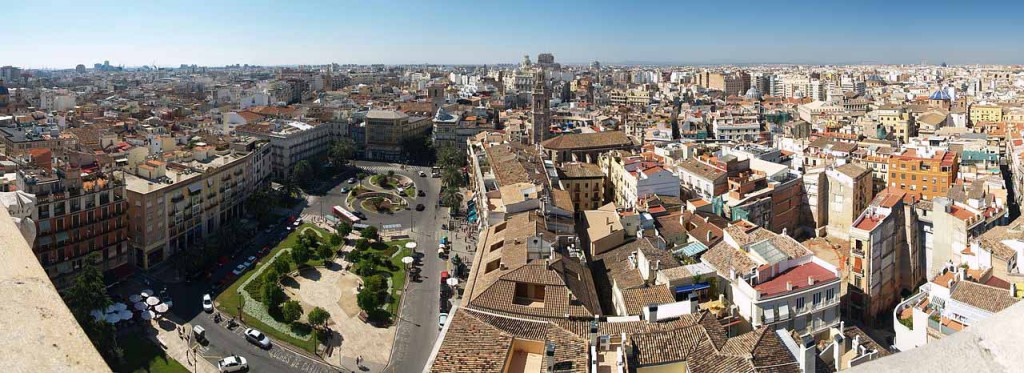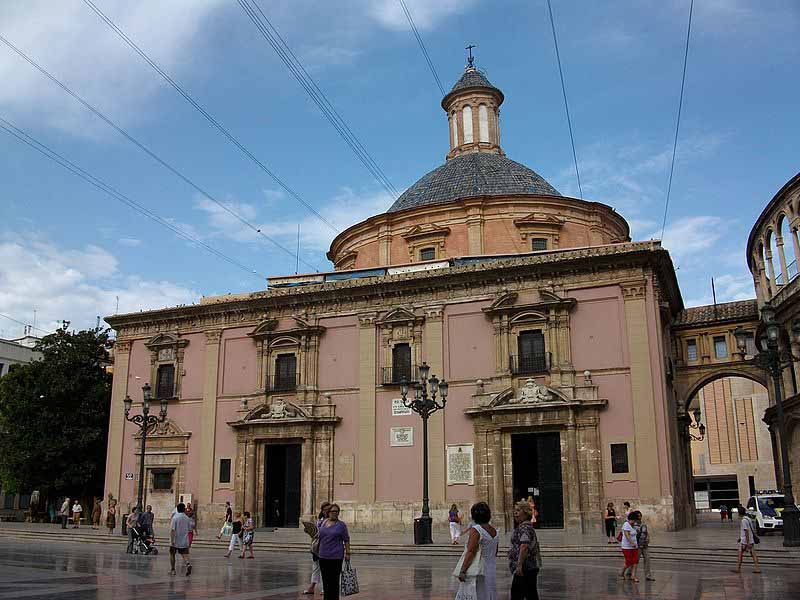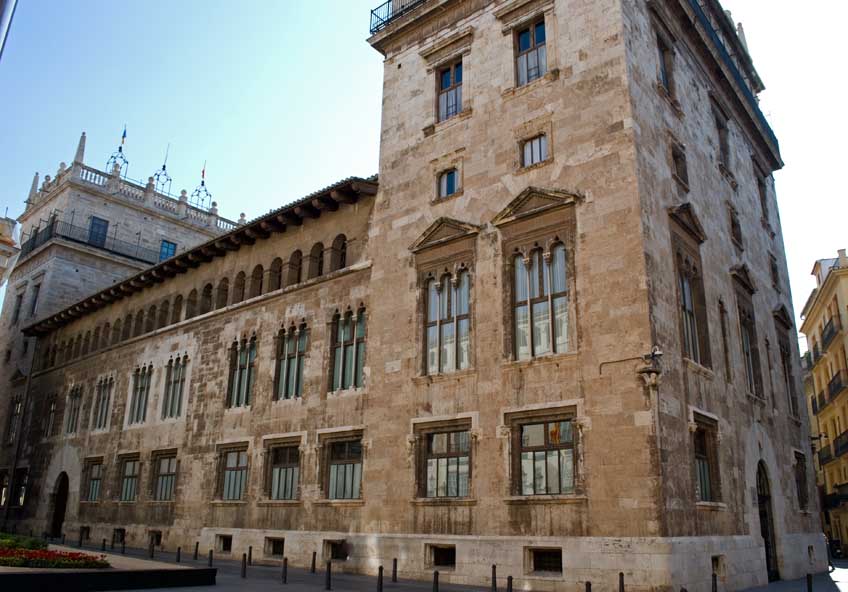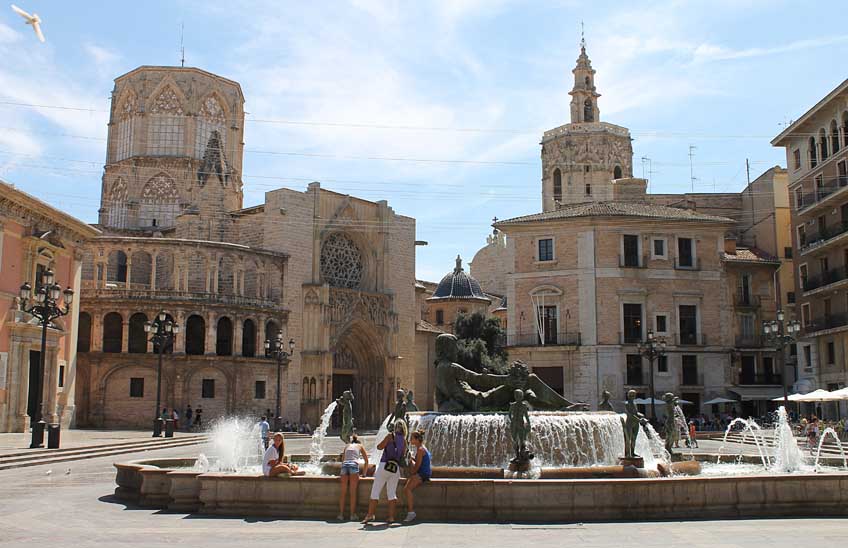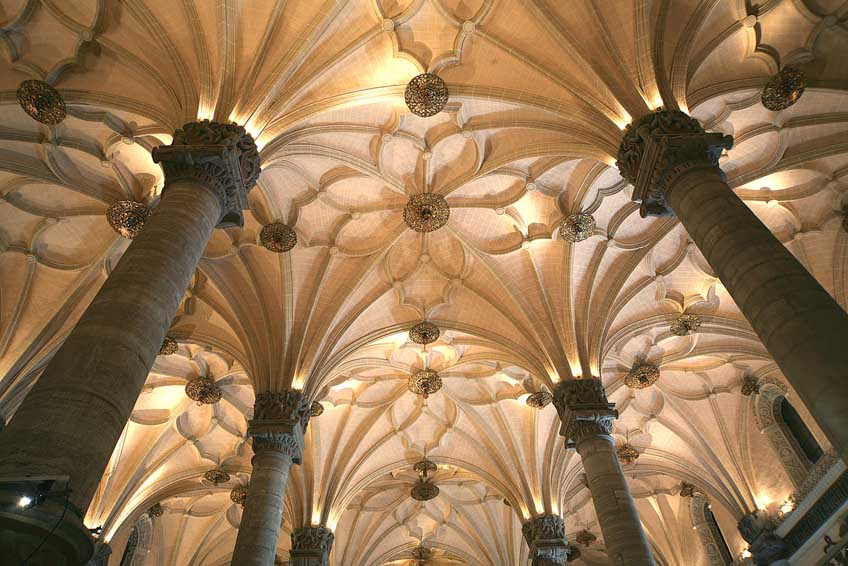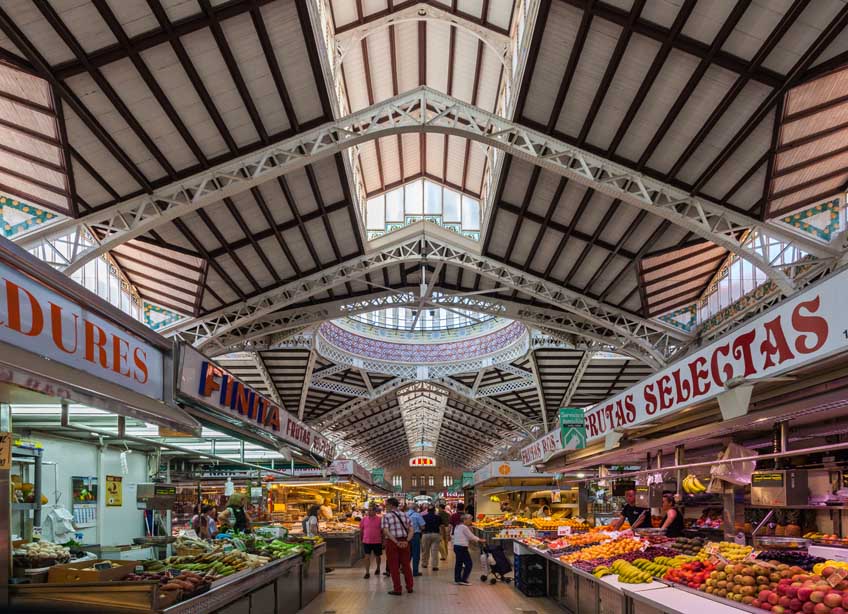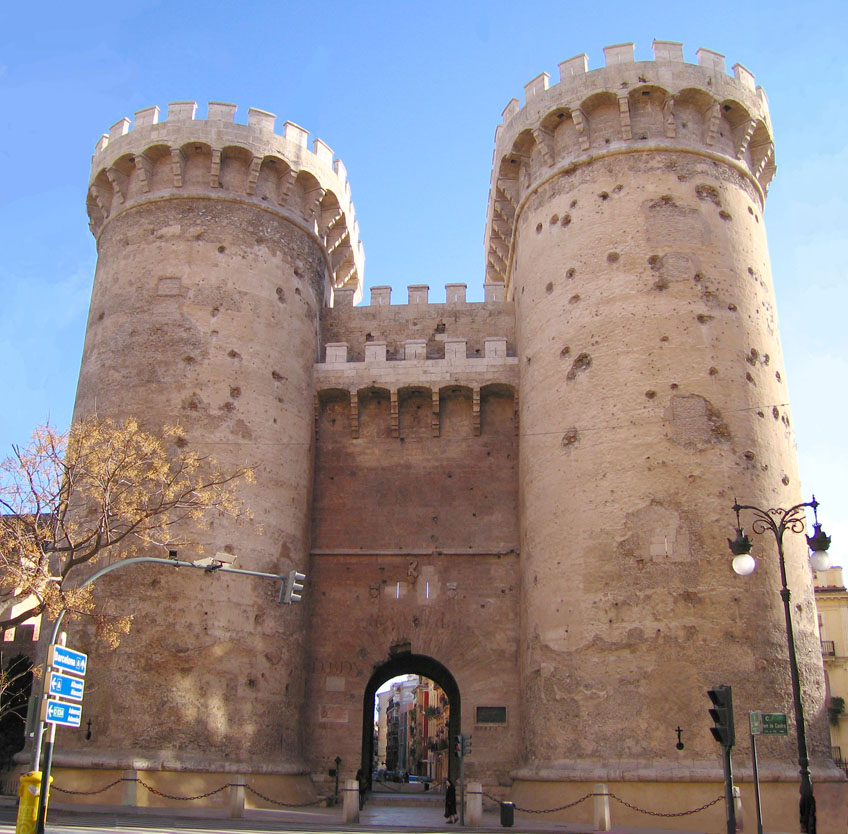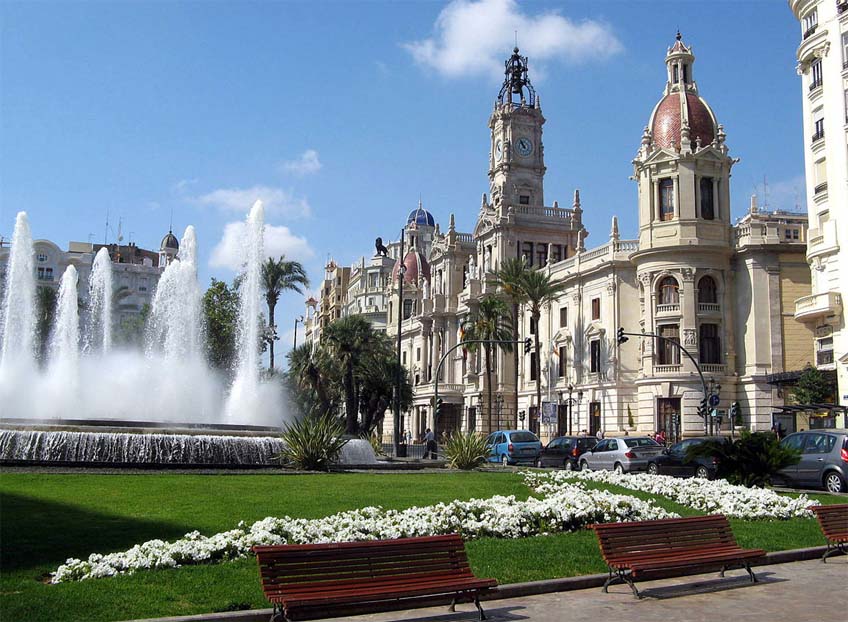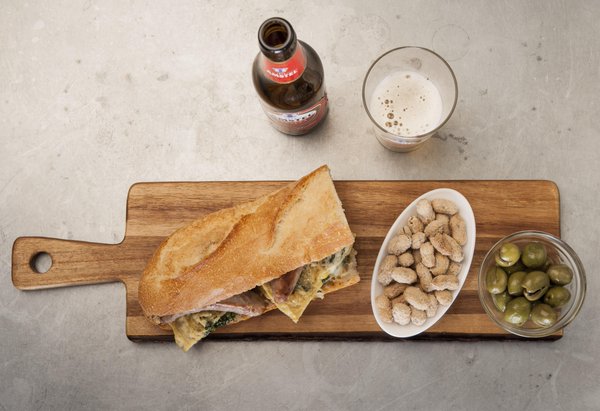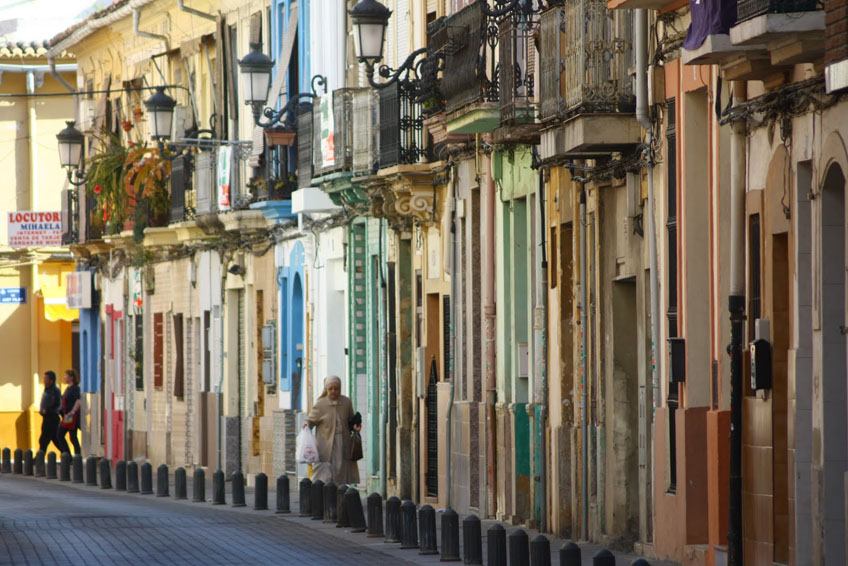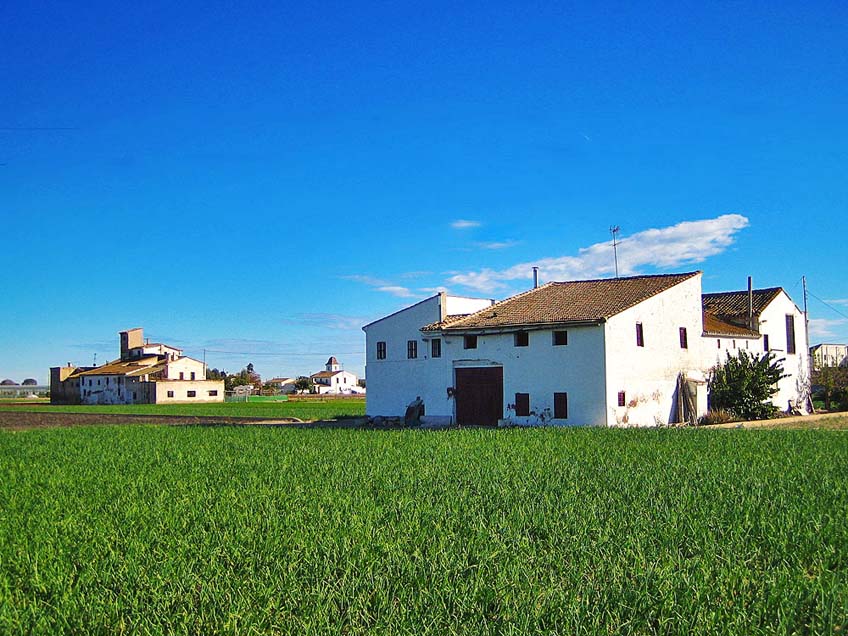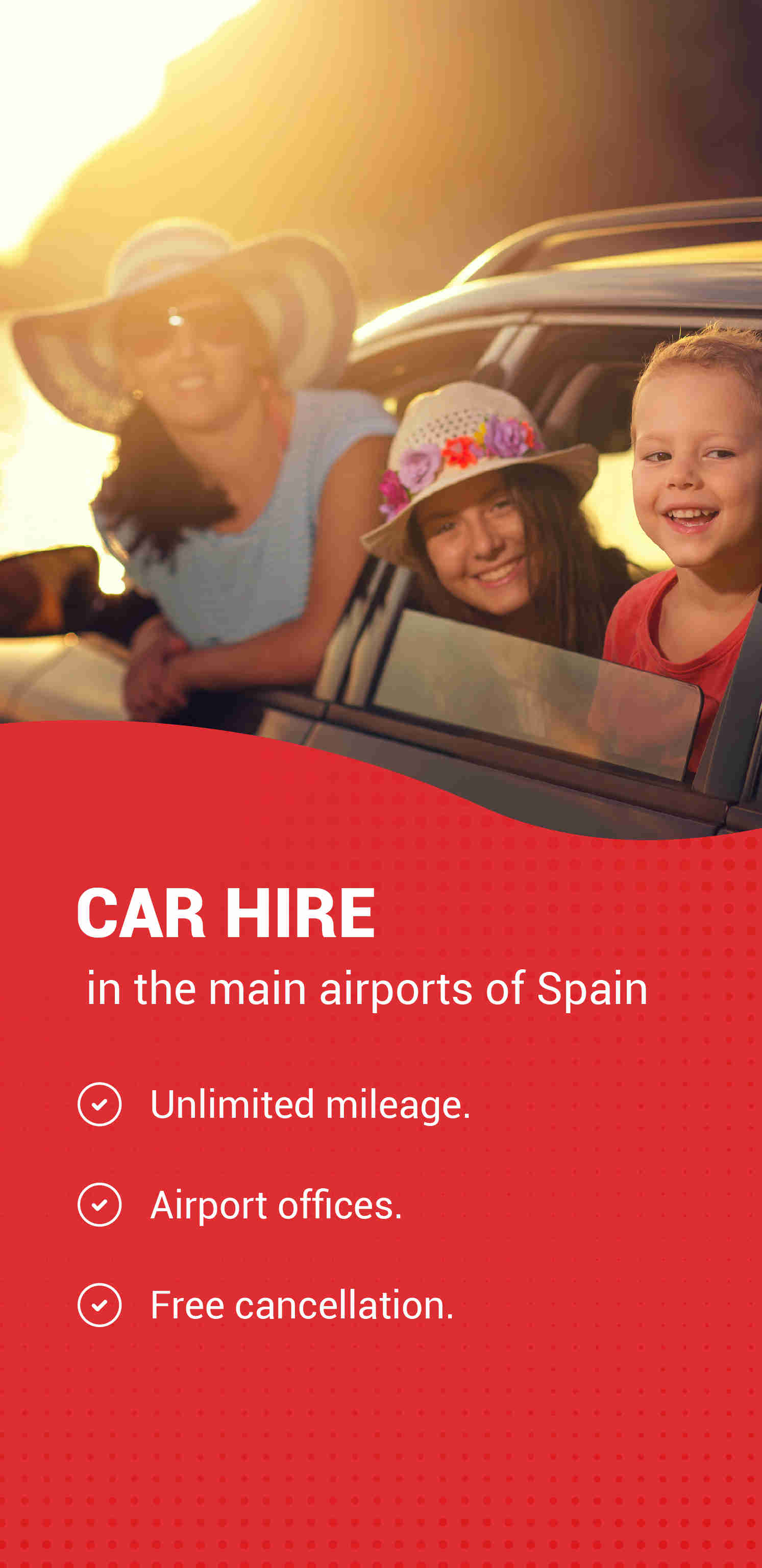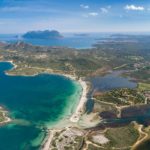This post is also available in: Spanish German
We are going to be honest with you; we started off this post thinking that we were going to be talking about visiting Valencia in a weekend and ended up with the three-day visit version of the city of Valencia. We kept adding thing we thought we could not miss and the suggestion list became bigger and bigger—it is just that Valencia rocks!
This guide will be divided into the following sections:
- Monuments and buildings of interest
- Valencia Museums
- Spoiling the palate
- Jardin del Turia and Ciudad de las Artes y las Ciencias
- The Cabanyal and the Malvarrosa
- The Rail Trail of Xurra
- L’Albufera of Valencia
It might seem like there are way too many things to do in just three days, yet if you organize yourself well and do not get caught up with the food and the drinks, you will make it for sure. Enjoying is what really matters, besides, you can always go back—we know you will.
Monuments and buildings of interest
Sunday morning is probably the best moment to visit the monuments, plazas and emblematic buildings of the city—some of them are free of charge on Sundays, actually.
Like we said earlier, it might seem like there too many things to see but all of these places are pretty close from each other, at walking distances, so do not get scared! 🙂
Catedral de Valencia (The Cathedral of Valencia)
Hours: from 8:30am through 8:30pm. They offer guided visits from Monday through Saturday from 10am through 5:30pm and on Sundays from 2pm through 5:30pm.
Price: Regular ticket 3 €; reduced-price ticket 2,10 €.
The construction started in 1262, over the existing Major Mosque. Its construction stretched on for a few centuries; hence there are elements from the Romanesque, Gothic and Baroque periods.
In one of its chapels, we find a holy chalice that is worshiped as the Holy Grail used by Jesus Christ in the last supper. We can also find contemplate the San Vicente Matir’s broken arm relic.
Miguelete
Hours: from Monday through Sunday from 10am through 7pm. From Nov. 1st through March 19th, the access to the tower is interrupted due to the mass that takes place from 1pm through 5pm On Sundays.
Price: 2 €
The Miguelete is actually the 63-meter high bell tower of the Cathedral of Valencia. It is quite popular to go up to its 51-meter high terrace through a spiral staircase of as many as 207 steps. For those of you who suffer from vertigo or just get annoyed easily, just know that the staircase is kid of narrow—especially the final part of it; nonetheless, the views are simply worth your time and effort. From the top of the tower, we can contemplate the whole city of Valencia and recognize all of its buildings and emblematic places.
At the foot of the tower, among other place discussed in this post, we find the Plaza de la Reina, of great beauty.
Basílica de la Virgen de los Desamparados
Hours: from Monday through Sunday, from 7am through 2pm and 4:30pm through 9pm
Nearby the Cathedral, and almost as an attachment, we find this Basilica, sanctuary of Virgen de los Desamparados, patroness of Valencia and the whole Old Kingdom of Valencia. It was the first baroque building constructed from scratch in the city of Valencia.
Palau de la Generalitat
Hours: from Monday through Friday, from 9am through 2pm; requires a previous booking (telephone number +34-963-863-558)
Price: Free
The construction of the Palau de la Generalitat started in 1421 as the headquarters of the Generalitat Valenciana (Government of the Valencian Community), which is the authority in charge of representing the kingdom before the courts. It is a building of Valencian Gothic style with some Renaissance touches.
It is nowadays the headquarters of the Generalitat Valenciana, the Valencian Community government, although it has been home to a few institutions from it has taken the name from.
Plaza de la Virgen
This plaza agglutinates the three buildings aforementioned, namely, the Cathedral, the Basilica de la Virgen and the Palau de la Generalitat. It also offers a very characteristic allegorical fountain of the Turia River and its canals.
Furthermore, here, every Thursday as 12pm the Tribunal de las Aguas (Water Tribunal of Valencia) gathers, right in front of the Puerta de los Apostoles of the Cathedral. This is a unique institution of justice, with a few centuries of history, which is in charge of handling the conflicts of the utilization of the irrigation water between the smallholder farmers. They conduct expeditious trials, spoken in Valencian language—its origins are still unknown, although some historians believe its origins go back to the Roman times.
Lonja de la Seda (SIlk Market)
Hours: from Mondays through Saturdays, from 9:30am through 7pm. Sundays and holy days, from 9:30am through 3pm. The building is closed on January 1st and 6th, May 1st and December 25th every year.
Price: single tickets: 2 €. Sundays and holy days: free.
This is, without question, one of the most emblematic buildings of the city; of Gothic style and Declared World Heritage by the UNESCO. It is a symbol of the commercial prosperity of Valencia in the 15th century.
Apart from the building’s beauty, it stands out the gargoyle and sculptures complex, with a wide presence of obscene and lustful images, as well as strange creatures. The origin of these creatures remains unknown to this day.
Mercado Central (Central Market)
Hours: from Monday through Saturday, from 7:30am through 3pm. Extraordinary market: Monday, from 9am through 2pm.
The building opened in 1928, yet, even in the Middle Ages this plaza already had a strong commercial vocation with outdoor stands, well connected with a building constructed in the middle of the 19th century. This building became small and hence the Mercado Central was built.
The place gathers 300 merchants of fresh products. It is Europe’s biggest market dedicated to fresh products and the first market ever to face the challenge of technology modernization and home delivery.
It is just amazing to get lost in its corridors seeing fresh products while listening to the hustle and bustle of merchants and buyers.
Torres de Cuart y Torres de Serranos (Towers of Cuart and Serranos)
Hours: from Monday through Saturday, from 9:30am through 7pm. Sundays and holidays, from 9:30am through 3pm. The buildings do not open on January 1st, January 6th, May 1st and Decembers 25th.
Price: Single ticket: 2 €. Sundays and holidays: free of charge
These are the two gates that still are preserved from what it used to be the great medieval wall of Valencia. These two walled towers have survived the French Independence War, the Succession War, the cantonal and The Spanish Civil War. There are, to this day, visible traces of the bombings on the façade of the Torres de Cuart.
In the interior, the part that used to face the interior of the city, are identical in both towers. Nonetheless, their exterior part is quite different from each other. Both towers can be visited through the interior and they can be ascended.
Plaza del Ayuntamiento (Town Hall Plaza)
The most important plaza in the city with various interesting buildings, most of them of modernist art, standing out the very Town Hall building—current headquarters of the Municipal Council and Municipal Historic Museum. This building can be visited from Monday through Friday, from 9am through 3pm.
Also, worth mentioning from this site, we have to talk about its fountain, which decks itself out at night with colored lights. From late 2015, the plaza becomes pedestrian the last Sunday of every month and several activities are held, such as plays, street performances or flea markets.
During the Fallas, this place does not lose any spotlight at all: it becomes the headquarters of different events such as the “mascleta” and the “planta” of the municipal Falla.
If you love going to the movies and have some spare time, be sure to check out the Film Library program of the Rialto Movie Theater—located at this plaza. We can guarantee that you will easily pin point it because it façade does stand out. For as low as 2 €, you will enjoy a good movie session.
Museums of Valencia
The city of Valencia has over 45 museums where the visitor can enjoy art, culture, architecture and history. Since we are short of time, we do suggest the following five:
- MuVIM: The Modernity and Illustration Museum of Valencia. It is both a museum and an exhibition center located on the grounds of the former General Hospital of the Kingdom of Valencia. You will be able to contemplate the hospital remains in the gardens that are located right in front of the museum. It opens from Tuesday through Sundays, being free of charge on Saturdays, Sundays and holidays. The rest of the days, 2 €. Official website muvim.es.
- IVAM: Modern Art Institute of Valencia. It offers paintings from the city from the 19th century, as well as international art from the 20th It actually is one of the most visited museums of Spain. The entrance is free on Sundays and it is closed on Mondays. The rest of the days, the tickets cost 2 €. Official website www.ivam.es.
- Arqueological Center of L’Almoina: it gathers the archeological excavations carried out by the Town Hall of Valencia from 1985 through 2015. However, it greatest attraction are not the object but the building complex that allow the visitor to understand the urban evolution of the city since it foundation up to the present day. The entrance is free on Sundays, although the hours are reduced, from 9:30am through 3pm. The rest of the days– except for Mondays, which is closed—it can be visited from 9:30am through 7pm for just 2 €.
- Espai Tactel: it is a young gallery, especially dedicated to the latest trends of the contemporary art. They do offer six individual or collective exhibitions per year that last six weeks through direct invitations made by its directors. Official website com.
- San Pio V Museum: The Fine Arts Museum of Valencia. A reference for the classic painting and one of the richest picture galleries of Spain. It also provides with reference works from the artistic history of the society of Valencia. Official website: gva.es/
Spoiling the palate
Not everything must be about museums and monuments in Valencia. We should also take the time to indulge ourselves with some other pleasures in this city.
Ruzafa Neighborhood
Pretty close from downtown Valencia, on the South side and, located in the Ensanche District, we find one of the trendiest neighborhoods of the city of Valencia, the neighborhood of Ruzafa. The wide range of quality bars and restaurants provide this area with a special atmosphere and it becomes an amazing place to enjoy a beer at a terrace, some tapas, a complete meal or just a cup of coffee. We strongly suggest you the following:
- Bluebell Coffe co.: A great place for a brunch or just to rediscover the passion for coffee, with the star of the place and it sure is treated with good care. You will also find delicious cakes to accompany the coffee. The place has a nice interior patio and an appealing decoration.
- Slaughterhouse: bookstore, coffee shop, butcher’s business…A place with a modern atmosphere and very unique. You do not want to miss their burgers and the beer.
- Olhöps Craft Beer House: a true homage to beer. 10 beer taps that are changed on a daily basis and where customers can find the best craft beer from all around Europe.
- Dulce de Leche: bakery specialized in Argentinean sweets, fine pastries, natural juices, organic coffee and brunch. A charming decoration and a counter full of products that you will not be able to stop staring at.
- CeliacRuz: takes its name from a pun between “celiac” and “ruz” from Ruzafa. Coffee shop-bakery gluten free. A reference to the gluten intolerant and allergic people.
- Rodamon: it is an international cuisine restaurant where you can travel the world through their tapas variety. You must book your table in advance for sure.
- Canalla Bistro: very fashionable. Eclectic cuisine in a place with a very unique decoration where the wood is the central axis.
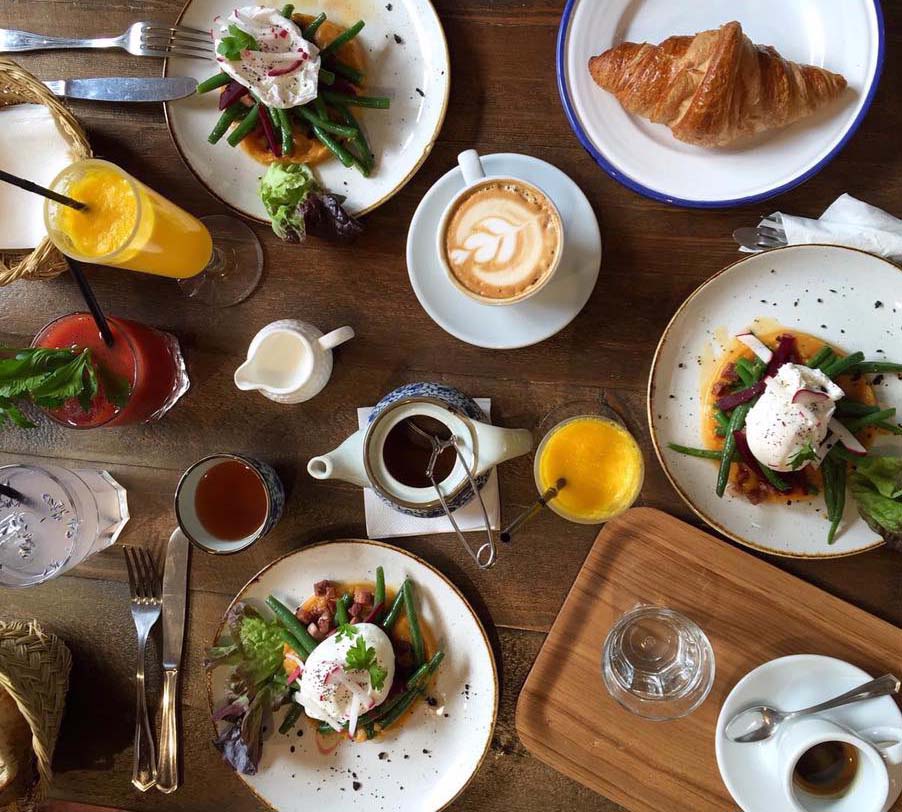 Foto de Cotonetlavande en Bluebell Coffe co.
Foto de Cotonetlavande en Bluebell Coffe co.
Carmen Neighborhood
The Carmen neighborhood is, hands down, one of the most exciting neighborhoods of the city of Valencia. Commerce, art, bars, restaurants, pubs, clubs…Leisure area in the heart of Valencia and a must-see area. If you feel like having a break after the touristic trip to eat something, we suggest the following bars:
- La Tasca del Angel: it is rather small and kind of hard to get a table. It is very popular for its sardines.
- La Comisaria: affordable signature kitchen, of Mediterranean Style and with a value menu.
- Canela: traditional gastronomy from Valencia without giving up on creativity and the fussion.
- La Pitanza: specialized in seasonal products.
- La Lola: rice dishes and market kitchen.
Brunch culture “esmorzaret”
The brunch culture throughout the Valencian Community is unique in Spain. At mid-morning, many bars in Valencia offer sandwiches, sausages, grilled meat and some other succulent tapas-all of it, accompanied by olives, dried fruits and a very cold beer. Also, dessert and coffee and, even some liquor to top it off.
As a matter of fact, under the slogan “It’s not brunch but esmorzaret!” it is intended to invigorate this typical habit in the Valencian Community.
Some say I barely have a coffee in the morning. Whatever the case may be, you might as well sit back, relax and let yourself be seduced by the smell.
- Bar Los Toneles and its squid sandwich
- Bar Alhambra, where you can have the best Spanish omelet in Valencia.
- La Pascuala. Very famous by it gigantic sandwiches.
- La Pergola. A classic kiosk for the esmorzaret.
Jardín del Turia y Ciudad de las Artes y las Ciencias
The Jardin del Turia is one of the largest urban natural parks of Spain. It is located on the former Turia River course, which was diverted in order to prevent flooding rains like the one that took place in 1957 that desolated the city of Valencia.
This is a lineal park that starts at the Parque de Cabecera and the Bioparc to the West and finishes, after bordering the historic city center, at the Ciudad de las Artes y las Ciencias. It is a total of 9 kilometers from one end to the other.
There are rental bike stands, which are the most convenient way to travel the park completely and sightseeing the landscape with its bridges, palm trees, orange trees, pine trees, rose bushes, streams, ponds, fountains, ponds and paths… Also it offers sports facilities, bars with terraces and the famous Gulliver Park. This is a park filled with slides where both kids and adults can slide down like Lilliputians through Gulliver’s hair, fingers or legs—a 70-meter gigantic figure.
As we said earlier, we find the Ciudad de las Artes y las Ciencias at one end—a modernist architectonic complex destined to both cultural and leisure purposes.
Among the numerous offers, we also find a Science Museum, a Planetarium, an Oceanographic and some other enclosures for concerts, movie showing and sports events.
We would like to point out that the Oceanographic is the largest of Europe with as many as 110.000 square meters, 43 million liters of water and 45.000 specimens of 500 different species.
El Cabanyal and la Malvarrosa
If you visit Valencia during the summertime, we know you know you have to pack your bathing suit or bikini in your suitcase.
Valencia offers a great range of beaches. From the port to the North, we find the most crowded and urban ones—they can be visited without exiting the city. On the South part, we find the beaches that belong to the Natural Park of the Albufera.
The Malvarrosa Beach is arguably the most famous one, and that includes good and bad things, of course. This is a beach with a wide 2-kilometer promenade, of fine sand and always entertained by a numerous amenities. This famous beach is in constant competition with the Cabanyal Beach (Las Arenas), which has a more family atmosphere and with the traditional restaurant rows offering paella. Both beaches are adjacent from each other.
About the rest of the beaches, we would like to suggest La Devesa Beach if you are looking for a more wild beach option, El Saler Beach if you want to practice windsurf, L’Arbre del Gos Beach if you are looking for a peaceful beach and the Pinedo Beach if you are into nudism (warning, not the whole beach is nudist, just one area). There is just two left, the Garrofera Beach, which is the smallest one in the South part and the Recati-Perellonet Beach, which is family oriented y pleasant.
Talking about El Cabanyal neighborhood, its charm goes well beyond the beach. This is a traditional neighborhood in the city of Valencia that was founded by fishermen and where it is very characteristic group of buildings with a picturesque façade decoration of the houses. This place still preserves the reticular urban system of its origins. The neighborhood is currently struggling to get a necessary regeneration plan.
The Green Track of Xurra
The former railway lines towards Aragon has become a cycle-tourist route where visitors have the chance to enjoy some of the most characteristic villages of L’Horta Nord area such as Alboraia, Almassera, Meliana or Rafelbunyol.
During the journey, we will be able to be immersed in the Valencian tradition going through orange groves, ditches and barracks—a typical construction in the Valencian Community that used to serve as a lodging for the farm workers. We will come across the Santa Maria del Puig Monastery, which had a crucial role in the conquest of Valencia.
This is a 15-kilometer track that connects Valencia and Puçol. For further information, please check out the official website of the Green Tracks.
If you feel like completing this track, and since you will pass by Alboraia, you do not want to miss a visit to Horchateria Daniel in order to taste their fartons (confectionery sweets typical of the Valencian town of Alboraia. Elongated and glazed with sugar, they are made of flour, milk, sugar, oil, eggs and a leavening agent) with authentic horchata.
L’Albufera de Valencia
L’Albufera is located 10 kilometers away South of Valencia and it is a salted-water lagoon separated from the Mediterranean Sea by a sand cordon, but yet communicated with the sea in some points. This is a very rich area as far as flora and fauna with a decent amount of interesting towns.
In order to enjoy this area, we suggest El Palmar, where you can find various quality restaurants. Besides, you also can contemplate the aforementioned barracks and take a boat trip through the L’Albufera lagoon. We are going to suggest you the Bon Aire restaurant —of Valencian gastronomy with their own products and special menus.
Another good option would be the Catarroja Port, which is not as famous as El Palmar. As a matter of fact, you might find locals saying they did not even know Catarroja had a port. Also, belonging to L’Albufera, although it is not actually by the lagoon but connected with it through a ditch, we recommend you La Primitiva restaurant so that you can taste the typical ditch of the area: “all i pebre” (garlic and pepper)—a type of stew based on eel. As it usually happens with these types of dishes, the eel was extremely abundant in the area.
Alright now, so far so good, this was our guide on what to see in Valencia in three days. We are not trying to brag but this sure came up really nice, although we have not talked about paella—a religion in the Valencian region. This would be postponed for another article because that can be a very long story 😉 If you are mad at us because we left you favorite corner in Valencia aside, we would be thankful to receive your comments and suggestions.

